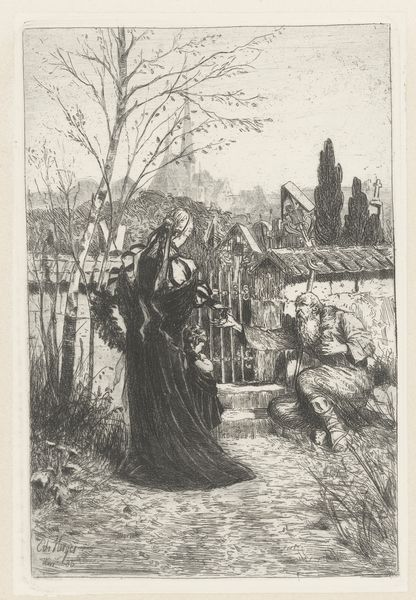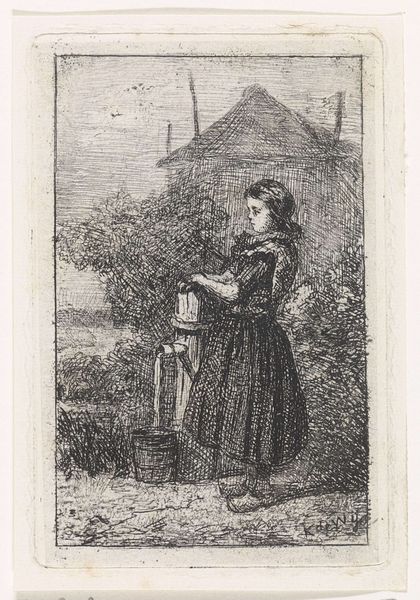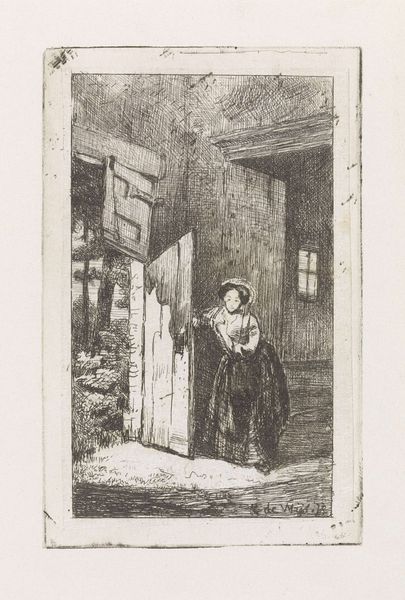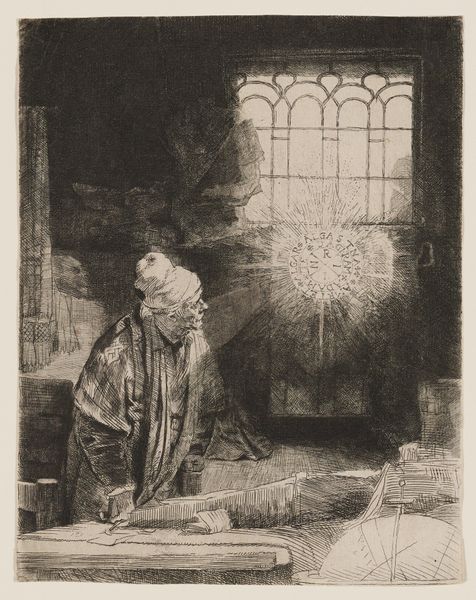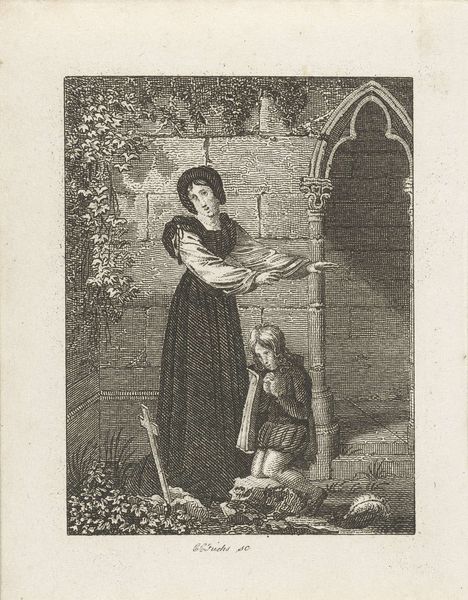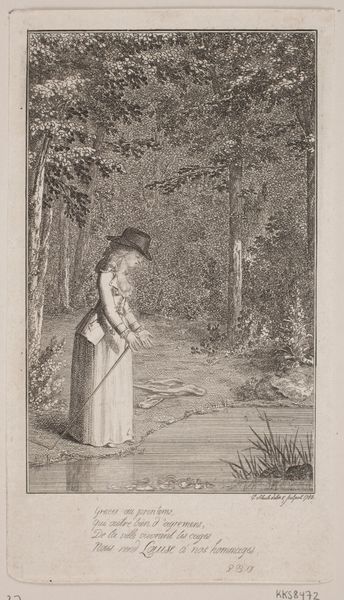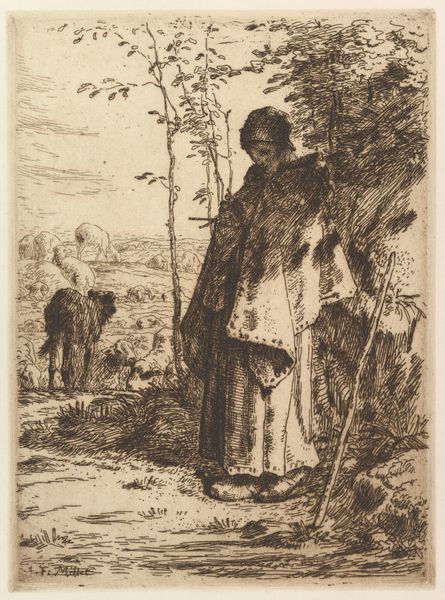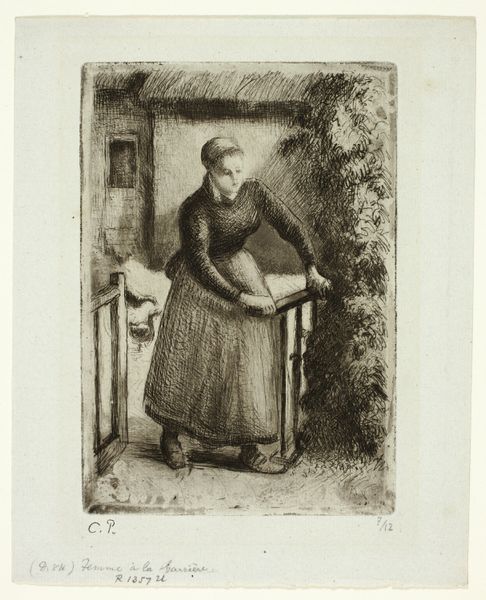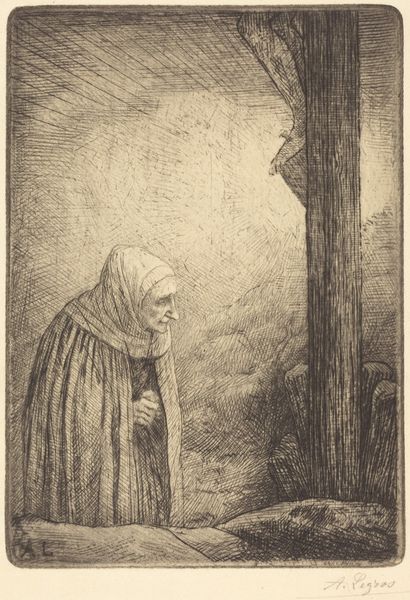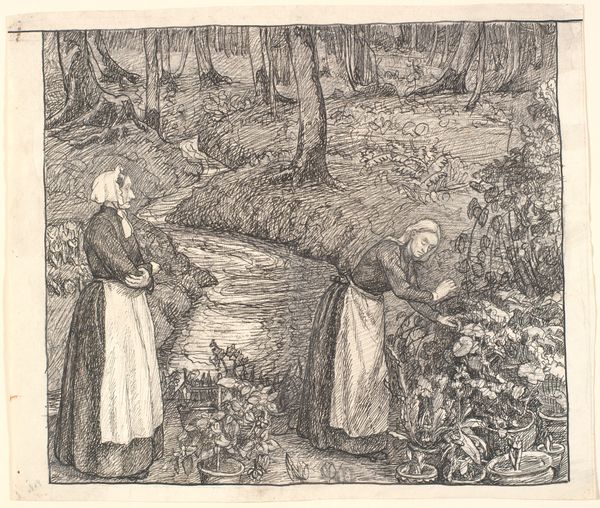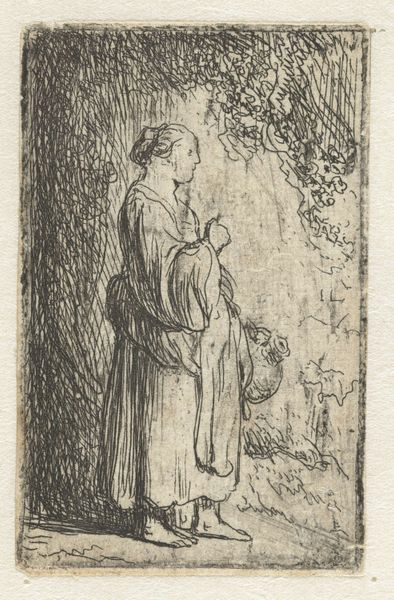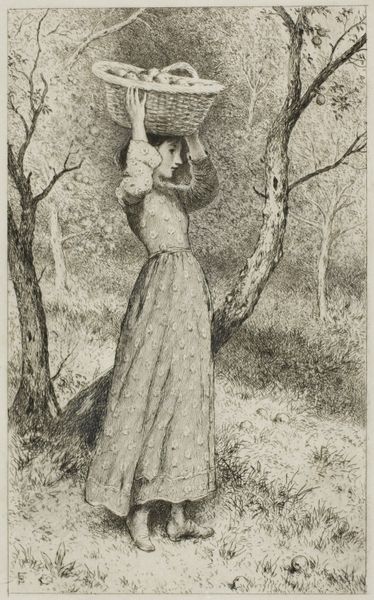
Dimensions: support: 610 x 508 mm frame: 788 x 685 x 100 mm
Copyright: CC-BY-NC-ND 4.0 DEED, Photo: Tate
Editor: This is "The Doubt: ‘Can these Dry Bones Live?’" by Henry Alexander Bowler. It's a very moving image of a woman in a graveyard. What strikes me most is the contrast between the vibrant foliage and the grim reality of the open grave. How do you interpret this composition? Curator: The artist has masterfully deployed a high level of detail and realism to invite a formal reading that moves from death to life. Note the contrast between the dark, somber hues around the grave and the brighter, more verdant colors in the upper register. Editor: That’s a great observation about the use of color! I hadn't considered how much the artist was trying to draw a contrast between the themes using the formal elements themselves. Curator: Indeed. The artist directs our gaze through contrasts of light and dark, inviting us to consider life's cyclical nature. Editor: Thanks, I'll never see this painting the same way again.
Comments
tatebritain 7 months ago
⋮
http://www.tate.org.uk/art/artworks/bowler-the-doubt-can-these-dry-bones-live-n03592
Join the conversation
Join millions of artists and users on Artera today and experience the ultimate creative platform.
tatebritain 7 months ago
⋮
This young woman, leaning on the gravestone of a man called John Faithful, is contemplating religious doubt. In particular, the Christian belief that the dead will be resurrected on the Day of Judgement. Long-standing religious beliefs were being disrupted at the time this was painted. New scientific publications explored theories of evolution, challenging literal readings of the Bible. Her question appears to be answered by the growing chestnut tree and the stone at its base, carved with the word Resurgam’, which translates as ‘I shall rise again’. The blue butterfly on the skull symbolizes the human spirit. Gallery label, August 2018
